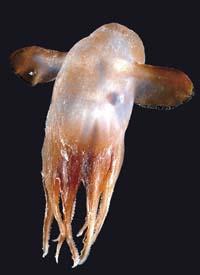Unknown inhabitants of the oceans

It began in 2000 and ended in 2010. Nearly 3,000 scientists around the world have worked for ten years to meet a challenge: Preparation of the Maritime Life Census. Unprecedented photography of the diversity, distribution and abundance of living beings in the ocean. From pole to pole, through the warm tropics, from coastal rocks to the deepest bottoms, from microbes to whales.
It has been a huge project, and so are the data. Of the millions of samples collected, 1,200 new species have been described and are estimated to have more than 5,000 species to describe. The OBIS database, which collects the geographical distribution of species, includes 6.5 million new observations. And in these ten years they have published 2,600 scientific articles.
It has been proven that 90% of marine biomass is made up of microorganisms. It is estimated that in a single gram of sand there are between 5,000 and 19,000 types of bacteria and, in a liter of water, 38,000. On the other hand, 20% of the species we know are crustaceans, 17% molluscs and 12% fish.

Now we know a little more the unknown underwater world. But they have also given data on what we need to know: for example, 20% of the volume of the oceans has no data.
Buletina
Bidali zure helbide elektronikoa eta jaso asteroko buletina zure sarrera-ontzian











